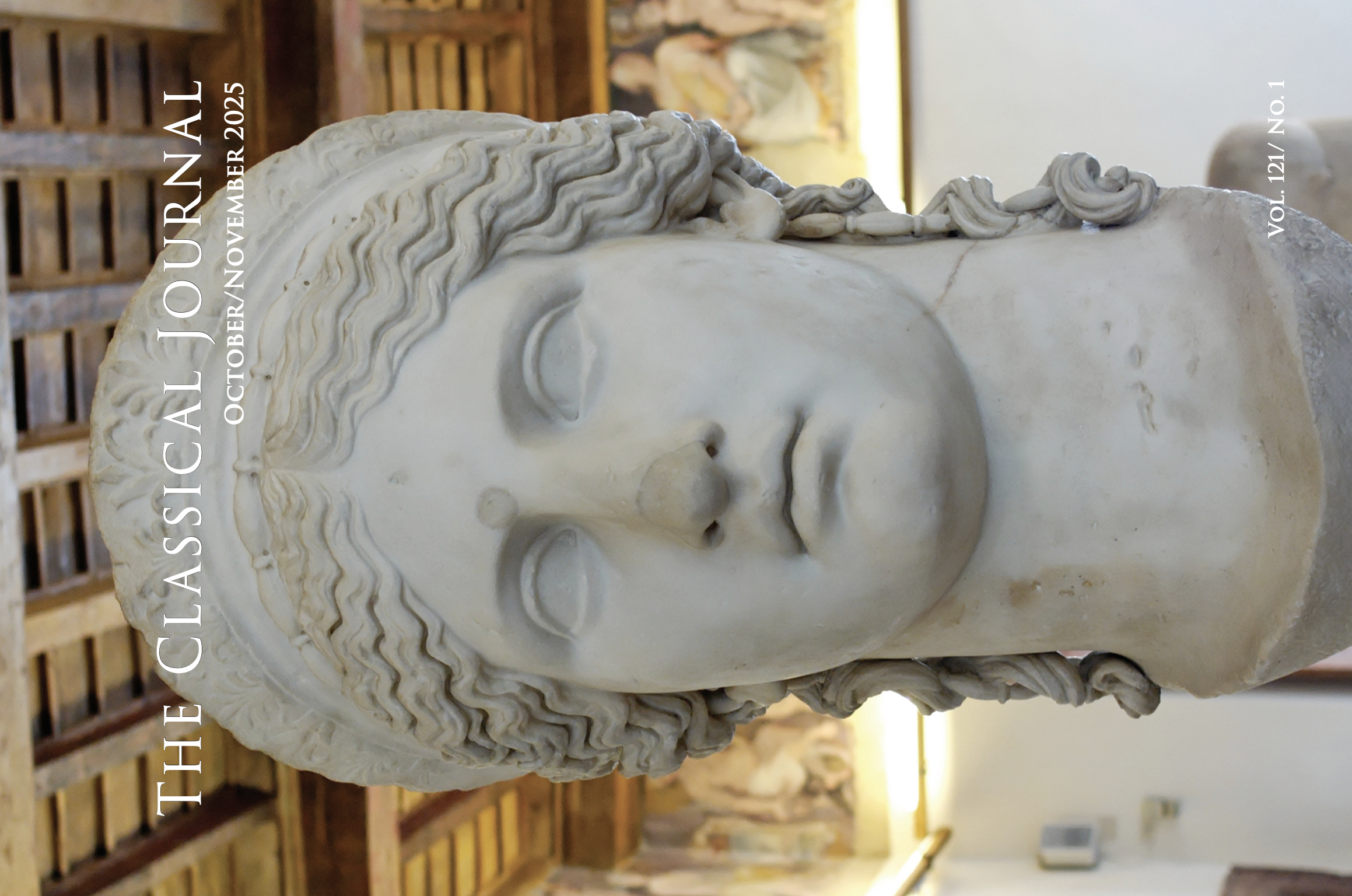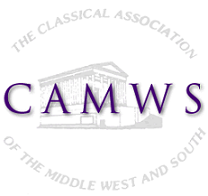The following articles are contained in CJ
112.2
Abstracts of Articles
SAPPHO FR. 16: LOVE AND WAR
This poem merges love and war. The mythical exemplum subtly alludes to the Trojan War and the gnome insinuates that what one loves collides with his better judgment, as it diverges from the feeling of safety desired by most people. These two parts clarify Sappho’s personal definition of beauty: love which transgresses social norms and is thus doomed to be only temporary has the capacity to carry away someone into wishes that they know are against the sense of sophrosyne; but that is precisely what gives life its special brightness, as there is no safety in the real world.
ASIANICS IN RELIEF: MAKING SENSE OF BRONZE AND IRON AGE MONUMENTS IN CLASSICAL ANATOLIA
This article argues that Bronze and Iron Age monuments in Anatolia were of intense interest to Greek historians and to the communities and individuals who lived in their vicinity. It focuses on two ancient historians’ discussions of pre-classical rock-cut reliefs to highlight the debates among ancient interpreters about the origins of such remains and their significance in local and universal history. Our analysis challenges Arnaldo Momigliano’s clearcut distinction between antiquarianism and history, as well as Elias Bickerman’s influential notion that the only “prehistory” available to the Greeks and their neighbors was that imagined by the Greeks.
SUCCEDOQUE ONERI: SHOULDERING RESPONSIBILITY IN THE AENEID
The metaphor of shouldering responsibility for an action, good or bad, was current in Virgil’s Latin, and his Aeneid includes three key scenes which draw on this meaning, Aeneas’ shouldering of his father, his shouldering of the shield of Roman destiny and Turnus’ wearing Pallas’ sword belt over his shoulder. Further instances of the motif both reinforce and complicate its significance—Atlas bearing up the universe, Aeneas wearing Dido’s cloak, Camilla coveting Chloreus’ armor and Euryalus donning the plundered equipment of Rhamnes. The visual correspondences thus established reinforce the often noticed presence of verbal echoes between episodes of the Aeneid and also help explain the prominence Virgil gives to Pallas’ belt as the trigger for the abrupt and troubling conclusion of the poem by both linking and—more importantly—contrasting Aeneas and Turnus.
HUMAN AND ASININE POSTURES IN APULEIUS' GOLDEN ASS
This article examines the ways in which Apuleius’ Metamorphoses thematizes the contrast between the prone posture of the ass and the upright posture of the human. A long philosophical tradition, starting with Plato and Xenophon, argued that the human body was especially constructed for celestial contemplation, while the quadruped body was more suited for baser activities such as eating and sex. Physical posture thus becomes another way for Apuleius to emphasize the “unphilosophical” nature of Lucius-as-ass. Moreover, in Book 11, numerous references to celestial contemplation give the theme an ironic climax, as further hints that the conversion to Isis is not the final transformation encouraged by this novel, but merely another stage on the road to further insight.


